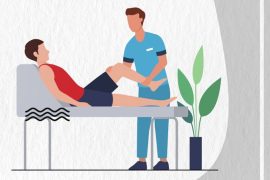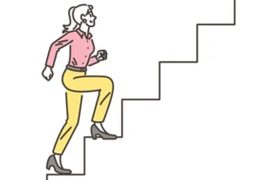Walking and exercising barefoot is a common practice for many, though most people only do it at home. Experts recommend allowing toddlers to walk barefoot as they develop, as shoes can interfere with muscle and bone usage. Walking without shoes also enhances proprioception, helping children better understand their body’s position in space.
As children grow older, they begin wearing shoes regularly, losing the natural benefits of barefoot movement. Advocates of barefoot walking encourage people to reduce shoe use and experience the advantages of walking freely, promoting better foot function and overall well-being.
Benefits of Walking Barefoot
- Improved Foot Mechanics & Posture
- Promotes better foot positioning when in contact with the ground.
- Strengthens intrinsic foot muscles, improving arch support and reducing issues like flat feet and plantar fasciitis.
- Enhances alignment of the knees, hips, and spine, lowering the risk of postural imbalances and back pain.
2. Enhanced Balance & Proprioception
- Increases body awareness (proprioception), reducing fall risk.
- Strengthens stabilizing muscles in the feet and ankles, improving coordination and stability.
3. Strengthening of Lower Limb Muscles
- Engages and strengthens muscles often suppressed by shoes, including calves, ankles, and leg muscles.
- Helps prevent foot deformities like bunions, hammertoes, and claw toes caused by restrictive footwear.
4. Increased Sensory Stimulation & Nerve Function
- Stimulates nerve endings in the feet, improving circulation and nerve function.
- Enhances blood flow and lymphatic drainage, relieving foot pain and stiffness.
5. Pain Relief & Joint Health
- Reduces joint stress by allowing natural shock absorption.
- May help with chronic foot pain caused by poorly fitted or overly cushioned shoes.
6. Connection with Nature & Grounding Benefits
- Walking barefoot on natural surfaces (grass, sand, soil) may help absorb earth’s electrons, which are believed to reduce inflammation and stress.
- Grounding has been linked to improved sleep, lower cortisol levels, and overall well-being.
Potential Risks of Walking Barefoot
- Increased Risk of Foot Injuries
- No protection from cuts, bruises, or punctures from sharp objects like glass or rocks.
- Hot surfaces (pavement, sand) can cause burns, while cold surfaces may lead to frostbite.
- Slippery or wet areas increase the chance of falls and sprains.
2. Poor Foot Mechanics & Muscle Weakness
- Feet unaccustomed to being barefoot may lack strength and mobility.
- Can strain arches and Achilles tendon, leading to plantar fasciitis or Achilles tendinitis.
3. Exposure to Bacteria, Fungi, & Infections
Increases risk of infections such as:
- Plantar warts (HPV)
- Athlete’s foot (fungal infection)
- Bacterial infections from open wounds
- Parasitic infections from contaminated soil
4. Risks for People with Diabetes or Neuropathy
- Reduced foot sensation can prevent the detection of injuries, leading to infections or ulcers.
- People with diabetes should consult a doctor before walking barefoot.
5. Overuse Injuries & Joint Stress
- Lack of cushioning may increase impact on joints, leading to knee, hip, and spinal pain.
- Sudden barefoot running or walking can cause stress fractures and tendon inflammation.
How to Minimize Risks & Transition Safely to Barefoot Walking
- Start Slowly – Begin with short sessions (15-20 minutes) and gradually increase duration.
- Choose Safe Surfaces – Walk on soft ground like grass, sand, or yoga mats before hard surfaces.
- Inspect Feet Regularly – Check for cuts, blisters, or infections, especially if walking outdoors.
- Strengthen Foot Muscles – Perform foot exercises to build strength and flexibility.
- Use Minimalist Shoes First – Help transition by reducing support gradually before going completely barefoot.
Step-by-Step Guide to Walking & Exercising Barefoot:
- Start Slow & Build Gradually
- Begin with short sessions and listen to your body.
- Avoid overloading foot muscles to prevent injuries.
2. Practice Indoors First
- Walk on carpets, yoga mats, or smooth floors before moving outdoors.
3. Choose Safe Outdoor Surfaces
- Opt for soft surfaces like grass, sand, rubber tracks, or turf fields.
- Avoid hard pavement or rocky terrain initially.
4. Strengthen Your Feet with Exercises
- Single-leg standing – Improves balance.
- Heel raises – Strengthens arches and calves.
- Toe spreading & curling – Enhances foot mobility.
- Short foot exercise – Lifts the foot arch while keeping toes down.
5. Use Minimalist Shoes for Transition
- Offers some protection while strengthening foot muscles.
6. Incorporate Barefoot-Friendly Activities
- Yoga – Enhances flexibility and foot control.
- Pilates – Strengthens foot and ankle muscles.
- Martial arts – Improves balance and coordination.
7. Check Feet Regularly for Injuries
- Inspect feet daily, especially if walking outdoors.
- People with diabetes or reduced sensation should be extra cautious.
8. Progress Carefully to More Strenuous Activities
- Barefoot running or hiking should only be done after full adaptation.
- If pain arises, take a break and wear supportive shoes temporarily.
Final Tips for Safe Barefoot Walking & Exercise
- Transition slowly and allow your feet time to adapt.
- Start on soft surfaces before moving to harder ground.
- Strengthen foot and ankle muscles before attempting intense activities.
- Listen to your body—stop if you experience pain.
- Regularly inspect your feet to avoid unnoticed injuries.
Walking and exercising barefoot can offer benefits, but it’s important to take safety precautions and practice moderation. If you have concerns about foot health or safety, consulting a doctor before prolonged barefoot exposure is recommended.
Disclaimer:
The information contained in this article is for educational and informational purposes only and is not intended as a health advice. We would ask you to consult a qualified professional or medical expert to gain additional knowledge before you choose to consume any product or perform any exercise.







